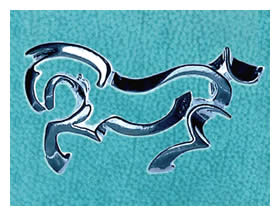 |
||||||||||
Date: March 12, 2026
by Chaya Venkat
Related Articles:
Rituxan Therapy
CampathTherapy

I would like to tell you about a new and interesting clinical trial that has just opened, January of this year. This trial at Mayo Clinic (Rochester, MN) is designed for untreated CLL patients with high risk disease. If you have 17p deletion or 11q deletion, as determined by FISH, you would qualify. Also if you have unmutated IgVH as well as CLL cells that are positive for CD38, you would qualify. Trisomy 12 is not considered high risk, you guys in Bucket B are not eligible. Enrollment in this trial is limited to patients with Rai 0-II disease who do not meet standard criteria for therapy. If the acronyms and jargon have you confused, time to read What Type of CLL Do You Have?. The idea is to see if patients in such high risk categories can benefit from early intervention with non-mutagenic therapy, rather than waiting until the last possible moment to initiate therapy. We are entering an era where the new drugs available may help control the CLL, without necessarily causing more problems due to carcinogenicity of the therapy itself.
You have all seen negative reports in the last year or so, on the subject of fludarabine as frontline single agent therapy for high risk CLL patients. At the same time, the conventional wisdom of Watch & Wait does not seem to be the obvious choice either, not for high risk cases. What is one to do? Single agent Rituxan therapy may be too "light" and not give you enough of a response. At the same time, you may not be ready to bring out the big guns and go for an RF (Rituxan + fludarabine) or FRC (fludarabine + Rituxan + cyclophosphamide) type combination chemo-immunotherapy as your first therapy. Campath may be a choice, but a stand-alone Campath therapy is generally for 12 to 16 weeks. A combination of limited duration Campath + standard dose Rituxan may be a Goldilocks best choice, neither too little nor too much. Only time will tell, when the clinical trial is done and reports are published. (You can count on it, CLL Topics will not stop pushing the research community to publish clinical trial results promptly).
This Mayo clinical trial ("Antibody Therapy with Alemtuzumab and Rituximab for Initial Treatment of High-Risk Chronic Lymphocytic Leukemia" protocol MC038G) lasts 30 days. Patients start off with Campath: I am delighted that the drug delivery is via subcutaneous injections and not intravenous infusion. Patients seem to have a much easier time with sub-q Campath compared to mainlining it directly into the veins. Therapy typically starts on a Wednesday, with gradual dose escalation of the Campath, going from 3, 10, to 30mg injections over the rest of this first week. The next week, full dose Campath is given at 30 mg, on Monday, Wednesday and Friday, and this is repeated for a total of 4 weeks. Rituxan infusions are also given each week, on Wednesday at the standard dose of 375 mg/m2 for a total of 4 weeks, starting on the second week. In other words, no Rituxan during the first week as patients are going through the dose escalation period with Campath. Dr. Zent, who is the Principal Investigator for this trial told me that most patients do better with Rituxan when the CLL counts in their peripheral blood are lower. Giving Campath only on the first week gets the blood counts down sufficiently, so that when Rituxan is added in the second week the infusion-related side effects are a lot milder.
How does this clinical trial protocol differ from another Rituxan + Campath trial that we reported on previously? (Rituxan plus Campath - Double Dose of Monoclonals) That trial was done at M. D. Anderson, and the results were less than exciting, as we reported. The patient cohort in that earlier trial were heavily pre-treated patients, folks who had been through several rounds of chemotherapy prior to entering the clinical trial. Monoclonals such as Rituxan seem to work much better in chemo-naive patients, and for that reason there is hope that patients in this Mayo trial may do better since they are a chemo-naive group. One would also hope that with better understanding and use of protective pre-medications as well as lower overall dose of Campath there will be fewer toxicities and opportunistic infections. The big question is this: will there be synergy, will the combination of Rituxan + Campath be greater than just plain additive 1 + 1 = 2, will there be more bang for the buck?
Campath and Rituxan are both commercially available: so why go through the hassle of a clinical trial? There are two very good reasons why it makes sense to go through these kinds of combinations in the setting of a formal clinical trial, and not at your local oncologist's office. First, Campath therapy has been associated with significant immune suppression and risk of opportunistic infections. We have published recent reviews (Hitting a Home Run with Campath Consolidation?, Campath - Looking Better and Better, Good News for the Tough Cases) where we detailed the toxicities and opportunistic infections seen in the setting of MRD ("minimum residual disease") clean-up with Campath therapy. This clinical trial is different in its duration, and the patients are chemo-naive to begin with. But it is nevertheless important that patients are carefully monitored. Dr. Zent tells me reactivation of cytomegalovirus (CMV) is something they watch out for, looking for traces of this virus by PCR even when there are no overt symptoms. This type of monitoring is hard to do at the community healthcare provider. The clinical trial protocol also calls for the usual prophylactic pre-medications to protect against Herpes virus, antibiotics, etc. If patients become severely neutropenic, the protocol allows for use of G-CSF (Neupogen) shots, you would not have to hassle with your local guy and convince him to get you the extra protection.
I would like to point out a second important reason why participating in the clinical trial is better than trying to do some version of this Rituxan + Campath combination on your own, with help from your local oncologist. Doing this kind of combination "off label" and outside a clinical trial means the data is never captured for the record. Did you get a response that was out of the ball park, set you up with a fantastic remission that lasted for ever? Well, no one will ever know, and even if you posted about it on the chat rooms it would never be anything more than anecdotal information. On the other hand, if it got you nothing more than a lukewarm response, you became sick as a dog in the process, you would like to be sure that your bad experience serves some useful purpose for patients that follow in your footsteps, right? Again the only way to capture the information is in the context of a clinical trial. Most of us are old enough to be parents and even grandparents. Familial CLL (Not the Worst Day of Your Life) is very much a fact of life, a worry that certainly keeps me awake at night more often than I would like. Our kids and grandkids are at higher risk of getting this disease, compared to the general public. Participating in clinical trials is one way of contributing to the knowledge base, a way of testing out new therapy concepts, distinguishing between what works and what does not. Can you think of a better gift you can give to your kids and grandkids?
What are the downsides of this combination? For starters, even with subcutaneous injections for only 4 weeks, Campath therapy is no ride in the park. How long will the myelosuppression last? Swedish researchers reported that some subsets of T-cells were mere shadows of their former selves and did not recover their pre-Campath levels even months later (Cellular Immune Reconstitution after Subcutaneous Alemtuzumab). How will the immune recovery play out in this clinical trial? Will the lower overall dose and shorter duration of Campath therapy mean the T-cell recovery will be quicker and better? The only way of answering this question is by going through the formal clinical trial. Another one that comes to my mind (Dr. Zent does not agree this is a real concern) is the depletion of complement levels, since there is reason to believe that both monoclonals use complement mediated pathways of CLL cell kill. But complement levels do recover over time, so this need not be a deal breaker concern.
Both monoclonal antibodies are expensive drugs. Using two of them is twice as expensive. With an alarming 40% of our citizens with no health insurance or poor quality insurance at best, the taxpayer in me asks the obvious question: if this trial combination proves to be the best thing since sliced bread, how many CLL patients are going to be able to afford this therapy? I guess we can defer the question for now, let some one else worry about the costs of healthcare. For now, I will be happy to see therapy choices that work, with commercially available drugs.
Another consideration is logistics. This trial is currently offered only at the Mayo Clinic in balmy Rochester, MN. You will have to be physically present at the Mayo, once a week for the first five weeks, then once a month for 6 months of follow-up. I do not know of too many insurance companies that cover cost of travel, hotel, etc., for patients participating in clinical trials. If you are a working stiff, it is also important to sort out with your employer about taking the time off to make trips up to Rochester. If your time is your own and you can stay put for the whole 30 days, I understand Mayo can help get you some good deals on places to stay, without breaking your budget too much. The good news is that the frozen tundra up north is not going to be quite as frozen in the next 6 months! Dr. Zent tells me that the later stage Phase-3 of this trial may be offered at other Mayo locations, such as Florida and Scottsdale AZ. Lot warmer locations, you can even get in a little golf while you are about it.
Four patients have enrolled already, and I believe they are looking to recruit a total of 30 patients, in two stages of 15 each. If you are interested in participating in this interesting clinical trial, call or better still ask your oncologist to contact Dr. Zent, his contact information is given below. And if you do decide to participate in this clinical trial, be sure to write and tell us all about it. We would be interested to hear your story.
|
Dr. Clive S. Zent, MD |
 |
I came across a poignant post on one of the CLL chat rooms today. This newly diagnosed patient has just found out that he has one of the more aggressive varieties of CLL, with 11q deletion and is positive for ZAP-70 and CD38. He has been diligent in coming up the learning curve, reading all about prognostic indicators and the changing of the paradigm from standard Watch & Wait for all patients to more risk-based therapy choices. So, now that he knows he has higher risk CLL, he asks the million dollar question: what should he do? I have looked at the various options and their risks / rewards to the point where I can recite them in my sleep. I thought I would give you the check list as I see it, save you some time. As always, this is just my lay-person take on things.
We take every opportunity to bring up the issue of prompt publication of clinical trial results in peer reviewed journals. We will now add a few more hot button items to our list: mandatory and no excuse announcement of all clinical trials on public websites (www.clinicaltrials.gov), fuller disclosure of trial protocols to patients interested in participating in them and last but not least, participation of patient advocates on Internal Review Boards. If researchers and their institutions want us to risk our bodies in these trials, it is time they started taking us seriously, as full-fledged partners in this game. Greater transparency and fuller disclosure are needed in an age when patients are becoming more savvy about their own healthcare. There is no going back to the old days and old ways of doing things.
 Enter Keywords: |
———
Disclaimer: The content of this website is intended for information only and is NOT meant to be medical advice. Please be sure to consult and follow the advice of your doctors on all medical matters.
Copyright Notice:
Copyright © 2026-2007 CLL Topics, Inc. All Rights Reserved.
All materials contained on this site are protected by United States copyright law and may not be reproduced, distributed, transmitted, displayed, published or broadcast without the prior written permission of CLL Topics, Inc. You may not alter or remove any trademark, copyright or other notice from copies of the content.
However, you may download and print material from CLLTopics.org exclusively for your personal, noncommercial use.
———
